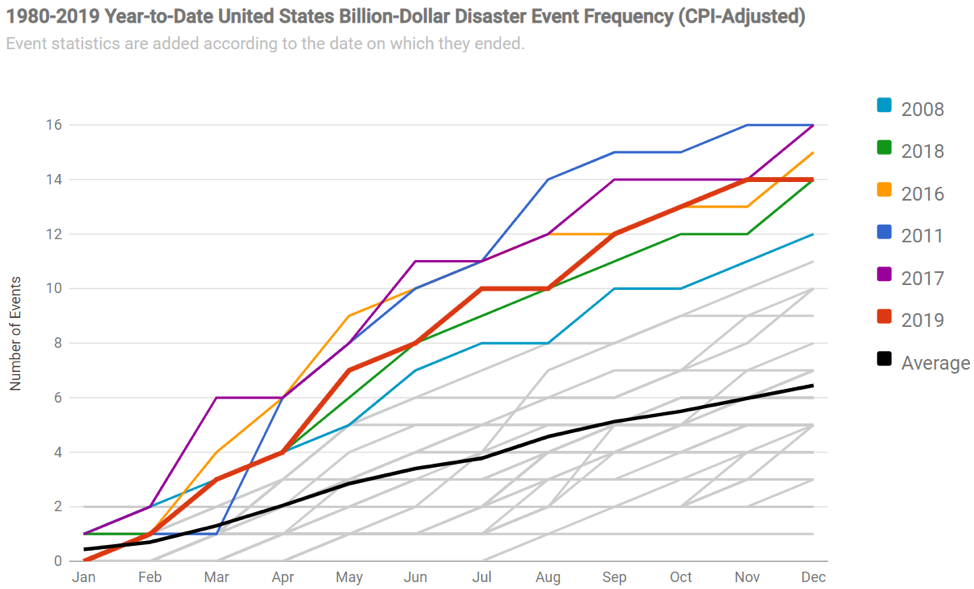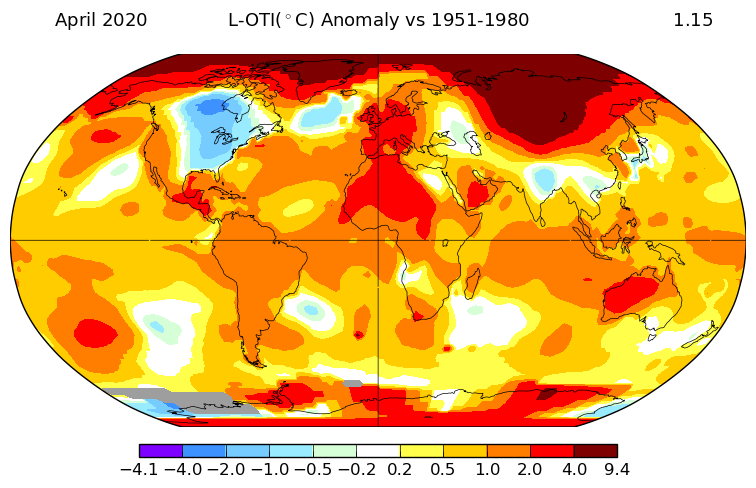 The chart here comes from using FRED (Federal Reserve Economic Data). Since at least the 1970s Hispanic or Latino (using FRED terms) unemployment was consistently between Black or African American and White and more recently slightly closer to White unemployment. For possibly the first time since the 1970s Hispanic or Latino unemployment (18.9%) exceeded Black or African American (16.7%) in April 2020. The Feb 2020 to April 2020 increase in unemployment for the four groups in the chart are (in order from smallest to largest) Black or African American (10.9%), White (11.1%), Asian* (11.8%), Hispanic or Latino (14.5%). It would seem that by both the total increase and the magnitude of unemployment that the Hispanic or Latino population was hit hardest by Covid-19. Moving to May, while Hispanic or Latino unemployment has decreased, along with White unemployment while Black or African American is stable and Asian increasing, they still exceed the other three groups.
The chart here comes from using FRED (Federal Reserve Economic Data). Since at least the 1970s Hispanic or Latino (using FRED terms) unemployment was consistently between Black or African American and White and more recently slightly closer to White unemployment. For possibly the first time since the 1970s Hispanic or Latino unemployment (18.9%) exceeded Black or African American (16.7%) in April 2020. The Feb 2020 to April 2020 increase in unemployment for the four groups in the chart are (in order from smallest to largest) Black or African American (10.9%), White (11.1%), Asian* (11.8%), Hispanic or Latino (14.5%). It would seem that by both the total increase and the magnitude of unemployment that the Hispanic or Latino population was hit hardest by Covid-19. Moving to May, while Hispanic or Latino unemployment has decreased, along with White unemployment while Black or African American is stable and Asian increasing, they still exceed the other three groups.
The link here to FRED is only for the graph of Black or African American unemployment. Use the Edit Graph button (top right) and then Add Line (middle top tab). Search for the other groups and add them to the chart. The chart will provide data starting in 1972. The graph is interactive and the data is available.
*Asian Unemployment numbers are not seasonally adjusted while the other three are – FRED didn’t have seasonally adjusted for Asians or I couldn’t find it.








